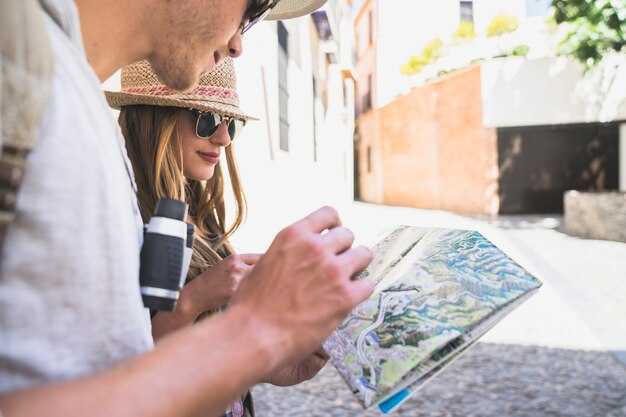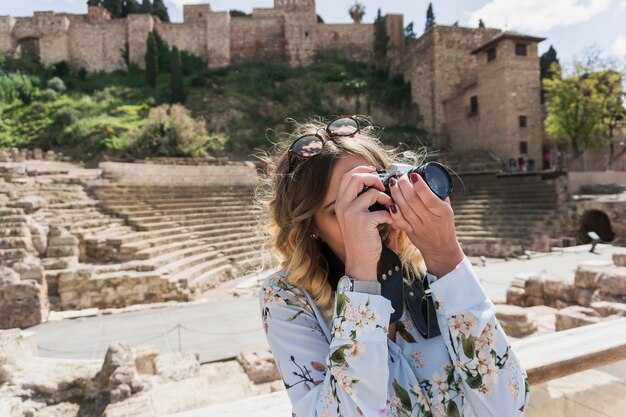Start your Granada visit with a sunrise at the Alhambra, which is considered a crown jewel of Moorish architecture, and the palaces built around water reveal a wonderful balance of light and stone. Secure tickets early, pace your steps to catch the first glow, and savor the panoramic view across the Generalife gardens. This moment sets a confident tone for the traveler who seeks beauty and clarity in every corner of the city.
In the Albaicín, wander narrow lanes that rise toward the panoramic mirador of San Nicolás, where the white houses contrast with black stone and the Alhambra needles the skyline. Local ambassadors of Andalusian culture share stories over tea, turning a stroll into a living lesson about craft, history, and the rhythm of daily life in the old space of Granada.
Around Plaza Nueva and the Cathedral quarter, the tapas scene offers a pragmatic way to sample flavors; many bars oferta a free tapa with each drink, so you can enjoy a favorite bite without a long meal. In Sacromonte, a show in a cave adds atmosphere, while nearby flamenco clubs become late-night anchors for the traveler who wants to feel the heartbeat of the city.
The Cathedral and Capilla Real anchor Granada’s medieval core, where the tombs of the Catholic monarchs rest next to a small exhibit on columbus routes and maritime links. The surrounding áreas mix Gothic, Renaissance, and Moorish traces, with streets framed by black shutters and balconies that invite a second look at every corner.
For a quick escape, head to the Sierra Nevada for alpine space and fresh air, or plan a day trip to Córdoba or Málaga. Granada’s compact center lets you move on foot between neighborhoods, and you can compare its narrow lanes with york’s historic core to gauge scale and atmosphere, all within a short ride from the city center.
Tips for the smart traveler: book Alhambra tickets in advance, join a guided walk that offers context about architecture, water systems, and the ambassadors of design; visit in the early morning or late afternoon for best light; wear comfortable footwear, and stay hydrated as eventos fill plazas from Friday evenings to weekend markets. Granada rewards curiosity with intimate corners, thoughtful spaces, and moments you’ll want to relive as soon as you leave.
Best Time to Visit Granada: Climate, crowds, and festival calendar
Visit Granada in late spring (April–May) or early autumn (September–October) for pleasant weather and lighter crowds, with reliable access to the Alhambra and its surroundings. For a photographer, late spring offers soft light and clear skies that highlight granadas tilework and city architecture.
Climate snapshot by season: spring and autumn average daytime highs around 20–25°C, with night temperatures in the 8–14°C range. Summer pushes above 30°C with dry days, while winter stays mild, roughly 5–15°C, with occasional rain. Rainfall concentrates in autumn and winter, keeping hills green and nature nearby.
Crowds and planning: Semana Santa (Holy Week) in March–April draws visitors into the historic center; weekends bring higher crowds to viewpoints and main plazas; when planning visits, book Alhambra tickets via the official website several months ahead; a professional photographer will find dawn and after-sunset hours ideal for photography, with light that makes walls and gardens glow.
Festival calendar: Major events structure the year: Semana Santa in spring brings intimate processions; the Granada International Music and Dance Festival runs late June into early July with performances in the Alhambra grounds and city venues; flamenco and jazz nights fill squares in summer; in September the justicia district hosts cultural evenings; check the official calendar on the city website for exact dates; Roman ruins and Columbus-era routes surface in museums and guided tours.
Practical tips: taxis are plentiful and easy to find at official stands; use the official website to plan itineraries and tickets; granadas city offers lots of vantage points to explore architecture and geometric street patterns; nature lovers can join day trips to nearby nature reserves; a professional guide can tailor routes for photographers and visitors alike, and you can watch the sunset over the Alhambra for wonderful imagery.
Alhambra Reviews: What to expect, ticketing tips, and optimal visiting order

Purchase timed-entry tickets online before you arrive to secure Nasrid Palaces slots and avoid queues.
The Alhambra, named for its striking red walls, is surrounded by nature with views over the city. The site contains a fusion of Moorish architecture and later Christian touches, called out in the intricate tilework, muqarna ceilings, and lush courtyards. Youre stepping into a place that balances original design with careful modern preservation, so check the official schedule and pacing to make the most of your visit.
- What to expect
- The complex blends three core areas: Alcazaba fortress, Nasrid Palaces, and Generalife gardens, each offering a distinct atmosphere and photo opportunity.
- Original elements include elaborate plasterwork, carved stone, and shimmering tile constellations that show a wonderful fusion of cultures.
- The gardens and water features create a sense of calm amid crowds, with courtyards that invite you to pause and enjoy the view over granadas lights at dusk.
- Spring weather in spain brings mild days and brighter reflections on the white walls; plan outdoor time with shade breaks and ample water.
- Plan for 2.5–4 hours to traverse the main routes, including time for photos, stepping across marble thresholds, and a brief dining stop nearby if desired.
- Ticketing tips
- Check the official site for availability, then secure a General Access ticket or a combined option that includes Nasrid Palaces; the latter contains the most coveted spaces.
- Nasrid Palaces require a timed entry; your slot is your window to explore the finest rooms, so align your plans around that time.
- Prices vary by season and option; study the map before you buy and consider a late-morning or early-afternoon slot to enjoy shade in outdoor areas.
- Bring a valid ID, arrive early, and keep your ticket handy–the staff may ask to verify your name and time; youre asked to present it at the gate.
- Dining and wine options exist nearby, so you can plan a post-visit meal that pairs local flavors with views of the site.
- Optimal visiting order
- Best practice: start with the Alcazaba fortress in the cooler morning hours, then proceed to the Nasrid Palaces during your timed slot, and finish with Generalife gardens when light is softer for photos.
- Alternative path: if your Nasrid slot is later, consider visiting Alcazaba first, then Generalife gardens, and reserve the Nasrid Palaces for your timed entry window to maximize comfort and pace.
- Walking route is linear but check your map; the sequence minimizes backtracking and lets you enjoy the city views between sections.
- Allow time to explore the surrounding viewpoints and courtyards–taking breaks helps you soak in the atmosphere without rushing.
Tip: use the official check-in points before your slot and allow for a buffer if you want to shop for souvenirs or sample a local wine at nearby dining spots after your tour. The experience, small but powerful, is a wonderful part of any Granada itinerary, especially for first-time visitors who want a balanced view of Spain’s history and scenery.
Granada’s Top Sights Beyond the Alhambra: Albaicín, Generalife, Cathedral, and more
Begin your Granada excursion with an early morning stroll through the Albaicín. This small, windswept quarter blooms as the sun hits whitewashed houses and the geometric Moorish details come alive in gold light. From the Mirador de San Nicolás you look across the Darro valley to the Alhambra’s towers, a reminder that you’re within a history-rich landscape. If youre staying in a local hostal, you can set your pace without crowds, then wander down toward Plaza Nueva where boutique shops and cafés invite a quick break. This route is absolutely worth the light and color you’ll see, and it works well for walking with a camera in hand. Travelers who arrive from barcelona or Malaga often pair this with a stroll through the city center; Albaicín is called the crown of Granada’s historic quarters, and you’ll feel how much this place has shaped the city.
Albaicín’s lanes are tight and small, but they unfold a big story. As you stroll, look for Moorish arches, lacy balconies, and tiles that repeat geometric patterns–tiny details that reveal how centuries of cultures were woven into the city. If you’ve visited Barcelona or Malaga before, you’ll notice similar elegance here, but Granada adds a crown of history that feels uniquely its own. The neighborhood is a magnet for visitors who want to pause, savor a pastry, and let the views do much of the talking. This area offers plenty of rich history and plenty of opportunities to enjoy yourself.
Albaicín: Walking the Moorish Quarter
From Albaicín descend toward the Cathedral square where the Catedral de Granada dominates the skyline with its cupolas and soaring interior spaces. Nearby Capilla Real (the Royal Chapel) is a compact, historical stop that houses the tombs of Ferdinand and Isabella, along with royal memorabilia. The area around the cathedral blends grand interiors with lively streets–you can enjoy a round of quick shops and cafés, then look up at the clock towers that crown the square. Travelers and locals mingle here, and you’ll find a mix of guides sharing tips in front of the façade.
Generalife sits above the city, its terraces framing sunsets over the valley. Exterior views and the pool area are accessible even if you don’t enter the gardens; for interior access you’ll need a separate ticket and timed entry. When you do enter, allow 45–60 minutes to wander the lush corridors, fountains, and water channels that echo Moorish design. If you want a broader look at Granada after these sights, add a stop at the nearby Cartuja Monastery or the old Alcaicería market, all within easy walking distance. Take time to sip coffee in a boutique café, and tell yourself you absolutely earned a day spent reading the city’s angles–historic, urban, and wonderfully walkable.
Experiencing Granada’s Culture: Flamenco, tapas, and Moorish influences in daily life

Start your Granada visit at crepúsculo com Flamenco num tablao compacto perto de Albaicín. Capte a voz do cantor, o jogo de pés rápido e as palmas da multidão, depois veja os arcos brilharem acima enquanto as luzes da rua se elevam.
Depois do show, junte-se a group para tapas ao longo de um spanish lane. The means de partilhar pratos permite-lhe provar batatas bravas, sardinhas grelhadas e jamón enquanto trocam notas dos seus trips. O pátio design with a arcos and a gate abrindo para um pátio sombreado ecoa o artesanato mourisco.
A vida quotidiana de Granada carrega influências mouriscas à vista desarmada. Intrincado trabalho em azulejo arcos, e telas esculpidas aparecem em palacio interiores e espaços públicos. Dentro da cidade, a cidadela se eleva acima dos telhados, insinuando sultão- planejamento da era.
Para uma imersão mais profunda, reserve um spring tour que combina arquitetura, música e mercados. Look for a package que inclui visitas aos gate e para um salão com mouros design, com horários que se adequam ao seu ritmo. Se você visited os bairros históricos, você encontrará both cantos tranquilos e lugares animados, com early começos e opções que funcionam até você chegar ao seu bar de tapas favorito. No entanto, mantenha seus planos flexíveis para apreciar a vista do pôr do sol de uma fortaleza no topo da colina, se possível.
As a traveler, você descobrirá um paradise encontrado em becos estreitos e praças acolhedoras, onde padrões mouriscos emolduram o cotidiano. Dê uma olhada em um sultão-motivo inspirado em uma porta, então observe multidões se reunirem em torno de um palacio pátio.
Dicas Práticas de Viagem para Granada: Como chegar, como se locomover, hospedagem e segurança
Reserve um trem de manhã cedo de Málaga para Granada para limitar as multidões e maximizar a luz do dia para suas viagens pelos monumentos da cidade.
O centro compacto de Granada é ideal para passear a pé: caminhe da catedral até o bairro de Albaycín, depois siga o passeio ao longo do Darro até os arcos e torres acima da cidade.
Escolha hotéis conhecidos no centro medieval ou ao longo da cidade velha; procure quartos com decorações tradicionais e vistas para o monumento; um bom pacote pode incluir café da manhã e acesso antecipado.
Planejar com antecedência compensa: reserve bilhetes com hora marcada para a Alhambra e considere uma opção guiada para evitar filas; este fato poupa horas e ajuda você a aproveitar mais o seu dia.
O clima em Granada muda com a estação: a primavera e o outono oferecem caminhadas confortáveis, o verão exige água e sombra, o inverno convida a cafés acolhedores e horas de luz do dia.
Nota de segurança: mantenha os objetos de valor seguros em áreas movimentadas perto da Alhambra e das praças; use táxis licenciados após o anoitecer e evite ruas isoladas. Para um toque de sabor local, experimente um verdadeiro vinho espanhol e tapas em um bar de bairro tranquilo.



Comentários